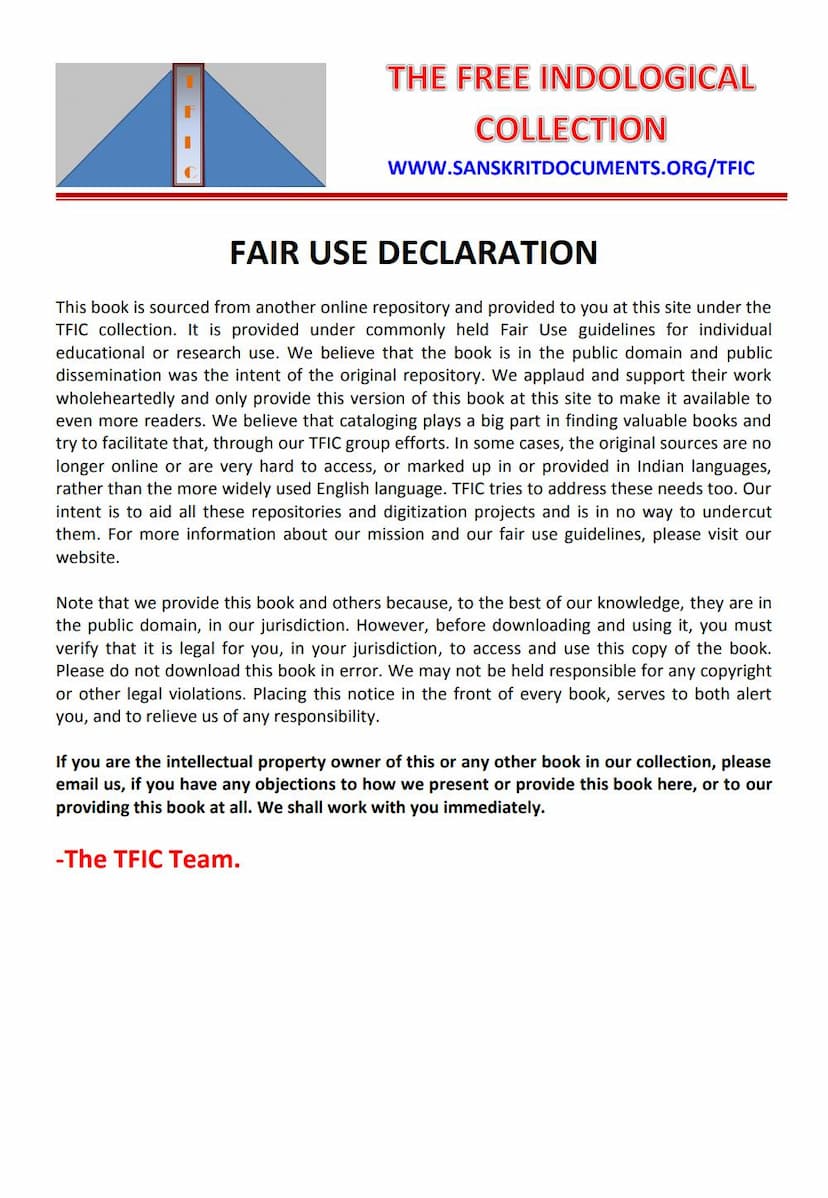Bada Jain Granth Sangraha
Added to library: September 1, 2025

Summary
Summary of "Bada Jain Granth Sangraha"
"Bada Jain Granth Sangraha" (The Great Jain Compendium) is a comprehensive collection of Jain religious texts compiled and published by Jain Sahitya Prakashan Mandir in Sagar. The catalog link provided is: https://jainqq.org/explore/010157/1.
This collection, presented in two parts and spanning 424 pages with 29 illustrations, aims to provide essential daily prayers and rituals. The first part is compiled by Master Chhotelal of Khurai (Sagar).
The book is a compilation of various significant Jain works, including:
-
Ratnakarand Shravakachar (Hindi Padyanuvad): A poetic Hindi translation of the classic Jain text on the duties of laymen, attributed to Pandit Girdhar Sharma. This section elucidates the nature of true religion, the characteristics of a true God, scriptures, and gurus, as well as the concept of right faith (Samyagdarshan) with its attributes and the "three foolishnesses" (trimoorthata). It details the eighteen types of impurities that a true God should be free from and emphasizes the importance of qualities like omniscience and non-attachment. It also defines what constitutes a valid scripture and the characteristics of an ascetic or guru.
-
Dravya Sangraha (Kavittavand): This section appears to be a poetic rendering of the "Dravya Sangraha," a fundamental Jain philosophical text that explains the nature of reality through the six fundamental substances (dravyas) of Jainism. It discusses Pudgala (matter) and its properties, as well as the other Dravyas like Dharma (medium of motion), Adharma (medium of rest), Akasha (space), Kala (time), and Jiva (soul). It describes the interactions and characteristics of these substances.
-
Dravya Sangraha (Mool): This is the original Prakrit text of "Dravya Sangraha" by Shri Nemicandra Siddhanta Chakravarti. It systematically outlines the Jain ontology, defining the nature of Jiva (soul) and Ajiva (non-soul) and their subdivisions. It details the characteristics of different types of souls, their sensory organs, mental faculties, lifespans, and classifications. It also elaborates on the five types of matter (Pudgala) and the function of Dharma, Adharma, Akasha, and Kala Dravyas. The text explains the concept of space (Akasha) and its division into Loka-akasha and Aloka-akasha, as well as the nature of time (Kala) and its atomic form. The latter part of this section delves into the karmic cycle, outlining the influx of karma (Asrava), bondage (Bandha), restraint (Samvara), exhaustion of karma (Nirjara), and liberation (Moksha).
-
Other Sections: The collection also includes various devotional songs, dialogues, dramas, and historical accounts, such as:
- Bhajans and Dramas: Describing various moral and religious themes.
- Historical Accounts: Including the history of Atishaykshetra Chandkhedi and the "Jaymala" of Prakrit Shodashkaran with commentary.
- Illustrations: The book features 29 illustrations, enhancing the visual appeal and educational value.
- Devotional Stotras: Including "Shanti Ashtaka Stotra," "Mahaveera Ashtaka Stotra," and "Adinath Stotra" by Acharya Mantugacharya.
- Narratives and Discourses: Covering topics like the nature of sin and virtue, the illusion of the world, the importance of compassion, the perils of intoxicants and smoking, the significance of moral conduct (Shil), and the merits of a virtuous life.
- Prayers and Rituals: The book includes detailed procedures for various Jain rituals and prayers, such as the "Samaayik Path" (both in Hindi and Sanskrit), "Siddha Puja," "Panch Parmeshthi Puja," "Dashlakshan Dharma Puja," and "Twenty Tirthankar Puja." It also provides instructions for performing Abhishek (ritualistic bathing of idols) and offering Arghyas.
The text emphasizes key Jain principles such as non-violence (Ahimsa), truthfulness, non-stealing, celibacy, and non-possession. It also highlights the importance of right faith, right knowledge, and right conduct (Triratna) for achieving liberation. The collection serves as a valuable resource for Jain devotees seeking to understand and practice their faith.
The book also features several descriptive pages showcasing other publications by the same publisher, Jain Sahitya Mandir, Sagar, indicating their commitment to promoting Jain literature.
Overall, "Bada Jain Granth Sangraha" is a comprehensive and devotional compilation that serves as a guide for Jain practices and a repository of philosophical and ethical teachings within Jainism.